#ossians cave
Text
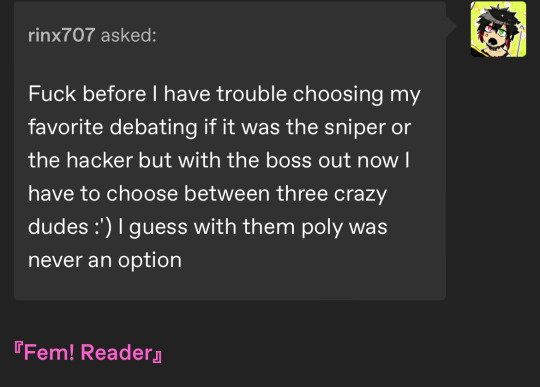

Unfortunately, poly between these three hitman are near impossible (^◇^;)』
『As I’ve stated once before Ossian the sniper is the most possessive man out of the group and would rather commit first degree murder to ensure that you would be his and his alone. He doesn’t care who he has to go through, even if it’s his Boss and especially the cheeky Hacker who he hates with all his guts.』
『Danny the boss is the utmost obsessive out of the hitman squad. And makes it well known by practically having you as his sole motivation. To even get off of his lazy ass and do something productive like being said Boss for his members. And the fact that he has to share the light of his light is an immediate turn off. He’d rather have them all to himself and obsess over them comfortably without any competition.
。Bonus: Danny got his darlings photos in his wallet, has them as his phone screensaver, and wears any gift they may have bought him. Also any mention of him taking it off for something would result in him throwing a huge fit as he’d practically sprawl on the floor and play dead as he’d rather die than to take it off. 』
『Yujin the hacker is the only one out of the trio that would be okay with being in an poly relationship if you make sure to give him his daily does of attention and affection since he’s generally clingy in his own right. But for the most part his job requires him to be at the ready so he’ll spend his time slaving away from within the confines of his bat cave.』
#Yujin the hacker#Danny the boss#Ossian the sniper#yandere imagines#yandere male x reader#yandere x you#yandere drabble#yandere male#yandere scenarios#yandere oc#yandere x reader#yandere blurb#yandere hitman#the boss#the sniper#the hacker#yandere poly#polyamory#yandere art#yandere content#yanderecore#yandere concept#yandere headcanons#yandere x y/n#male yandere#yandere x darling#yandere oc x reader#3dsimp art#oc artwork#artist on tumblr
110 notes
·
View notes
Text

A woman of the Aeskulap Tribe and a woman of the Zemlyauk Tribe, two of the founding tribes of the Ossian state, circa M31. The Aeskulaps were mostly made up of the Raktachaya ethnic group, who were believed to be descended from the xenos calamity that struck the planet on the day of the Collapse. The Zemlyauk were descended from human stock, but had developed an aberration that led to the multiplication of eyes, with four being the normal amount for the tribe. Both tribes lived in an abandoned medical facility, along with the Opiliones tribe, and relations between the Aeskulaps and the Zemlyauks were fairly taut. The Aeskulaps controlled most of the remaining functional medical suites, as well as access to the Flesh Caves, while the Zemlyauks jealously guarded the hallways where the Volosy Materi, an invaluable source of silk, grew. War likely would have broken out had the Progenitor Eve not snuck into the Zemlyauk’s living spaces and slain the crone elder and her children, leaving the leadership of the tribe in the hands of the one surviving grandchild, who the Matriarch adopted.
2 notes
·
View notes
Text
Alright, it's time I made my first post on here.
Hi, my pseudonym is Sapphire, and I'm a writer. I'll mostly post about my books that I never seem to actually finish, but I hope you all enjoy my work. This is the first draft of the first chapter of one of my books; please give me all the advice you feel like sharing. Also, title suggestions because I don't know what to call this mess yet.
________________
It was weird.
The creature’s small beady black eyes stared at me, and I started back. It was hard to see in the dim lighting of the cave. I went to reach for my flashlight to get a better look.
It hissed at me, clearly deciding I was an enemy, not a friend, and started to back away.
I froze in response, not wanting to scare it, but it turned and skittered away anyway.
I grabbed my flashlight, flipped it on, and ran after it. I only caught glimpses of it after that, but it was enough for me to follow.
The next event was only slightly more believable than the first. I turned a corner and saw a person, a girl I guessed from her blonde hair tied into a braid over her left shoulder. She was wearing baggy pants and a jacket to match that looked like they were made of a thick material and worn from use. the jacket was covered in glowing symbols.
The little creature climbed up her side and nestled on her shoulder before hissing at me again, easily drawing her attention. When she turned her attention from her shoulder to me, she froze like a deer in headlights. Similar to the creature, she backed up a step before turning to run.
“wait!” I yelled after her, but she didn’t listen as she vaulted over obstacles and climbed rocks to escape. I ran after her.
I grew up climbing and exploring caves just like this. I loved it, that’s why I’m here. I was looking for a new place to explore. I wasn’t prepared for this, though. My experience was enough to keep up with her for a while, but eventually, I reached a wall I couldn’t climb like she did.
“Damn it... looks like I gotta go back and get the right equipment,” I said to the wall accepting my temporary defeat.
———————————
Huff...
Huff...
Huff...
“that was way too close. You, my little friend, are all sorts of trouble.”
The small dragon ignores me while snuggling under the collar of my jacket and resting on my shoulder.
“come on, it’s time for you to run along” I reach up to remove the menace from my shoulder, but he hisses at me, “fine, you can stay there for now.” instead of worrying about the dragon curled around me I look for the way back to camp. I need to tell the chief what happened so we can do something before this becomes a problem. Luckily I lost the intruder in the caves, and we aren’t far from camp. I make my way back, mindful of the little creature, and look for the chieftess.
“Chieftess Aurelia!”
“what is it, Hilde?” she was tending to a dragon that got hurt in a fight and didn’t like the interruption.
“there’s someone in the tunnels. They saw this dragon,” I point to the one on my shoulder, “and me.”.
Now seeming a little alarmed, she asks, “where are they now?”
“I lost them somewhere in the caves before coming back here. I didn’t know what else to do.”
She sighs “stay in camp. I’ll deal with it.”
“Okay,” I nod.
After updating the chief, I thought it was time to get some help removing the dragon from my person. So I head over to the dragon medical tent.
“hey, Ozzy”
“Hilde, I don’t have time to slack off during my training. You know this.” His head is stuck in some book.
“I’m not here for that; I’m here on business ye who have no faith in me.”
“since when does a story keeper have business with a dragon medic.”
“since I picked up a friend in the tunnels.”
Ossian finally turns to face me rather than his book that I can now see is on dragon health, and he sees the dragon clinging to my shoulder. “what happened?”
“they ran into an intruder that scared them half to death. They’ve been clinging to me since.”
He grabs a bag off a shelf and a bowl from a cabinet. “they probably just need to calm down a little,” he pours some of the bag’s contents into the bowl and sets it on a table, “and some food will tempt them down.”
I reach up to pet the dragon, but they try to nip me. The gloves I’m wearing prevent any damage but not annoyance. Luckily the little creature decides they no longer want to hang out on my shoulder and jumps to the table with a bowl of food. “finally.”
“What, you didn’t like their company” he reaches out his hand to the dragon and lets them investigate it.
“you know I don’t mind dragons. I just have a problem when a terrified dragon sinks their claws in me and tries to bite me anytime I try to touch them.”
The dragon seems to decide Ossian’s not an enemy and starts eating, not minding when he starts to gently pet them “you’re just being impatient. You need to spend more time with them and less writing stories.”
“I’ll spend less time writing stories when there are fewer stories to write. Blame the people coming up with stories, not me. Also, there’s almost always important news to record that I can blame you and your fellow medics for.”
“we’re just learning all we can to help the dragons. Now get out of here before I lose more time arguing with you.”
“yeah yeah,” I leave the tent and dragon behind.
1 note
·
View note
Text






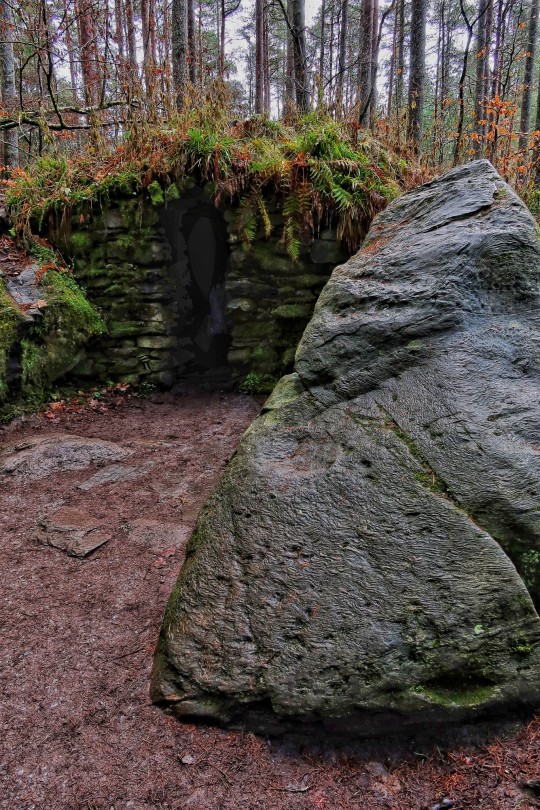

'Ossian's Cave', a romantic folly, The Hermitage Forest Walks, nr. Dunkeld, Scotland.
#ossians cave#cave#hermitage#hermit#ancient living#outdoors#wild living#folly#trees and forests#trees#stones#wild#nature#natural#landscape#solitude#idyllic#past#Scotland
508 notes
·
View notes
Photo

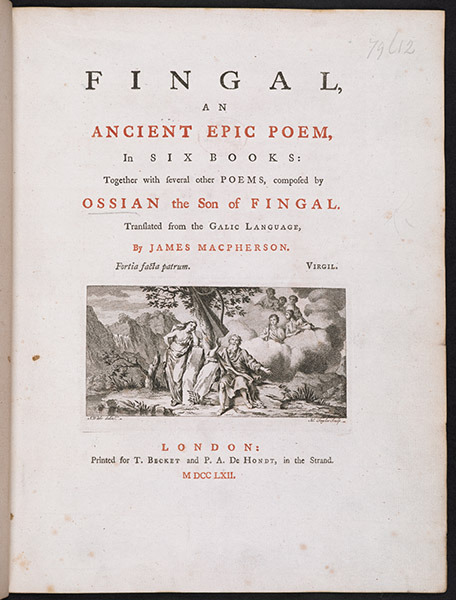


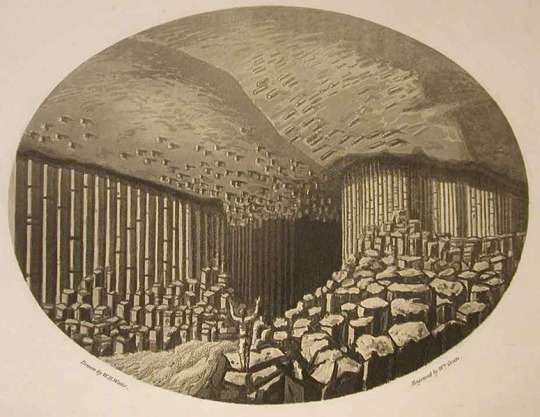




James Macpherson – Scientist of the Day
James Macpherson, a Scottish poet, was born Oct. 27, 1736.
read more...
#James Macpherson#Fingal's cave#basalt#Ossian#histsci#histSTM#18th century#history of science#Ashworth#Scientist of the Day
44 notes
·
View notes
Photo

31.08.2021_3:57 PM
0 notes
Text


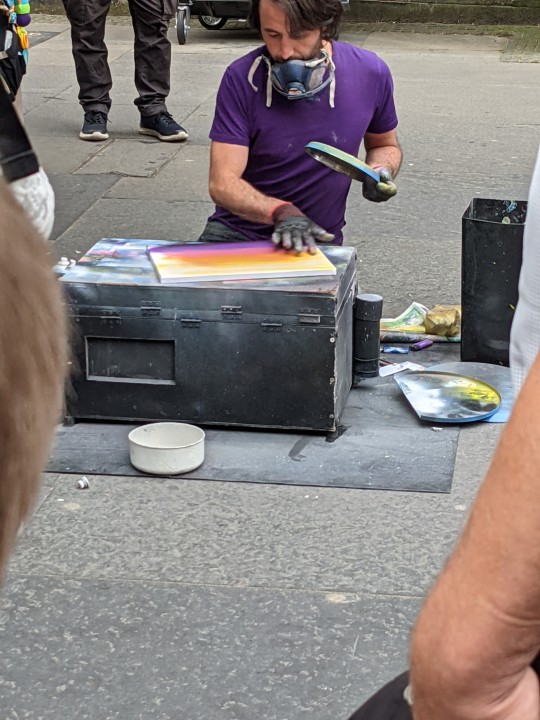
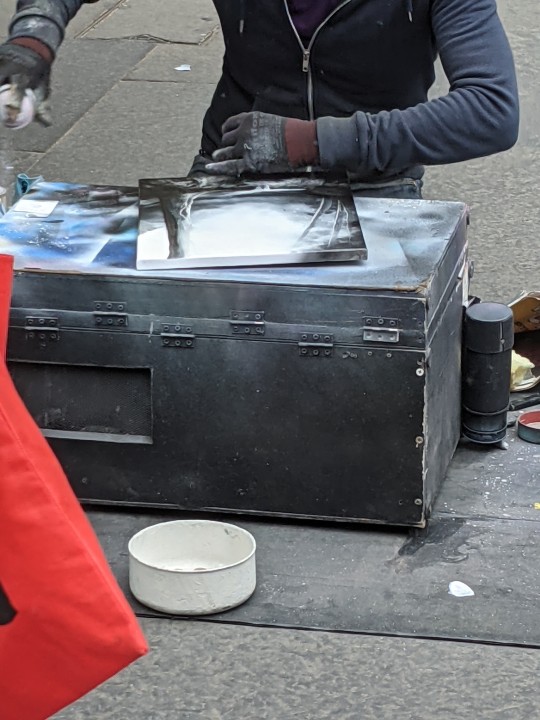
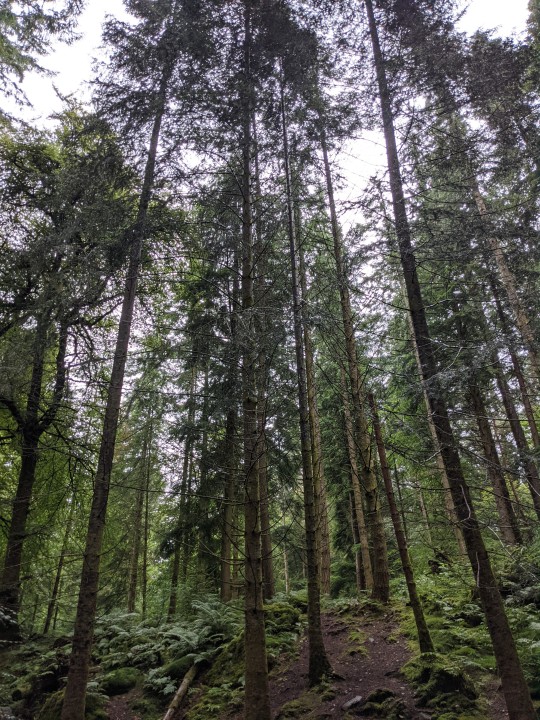


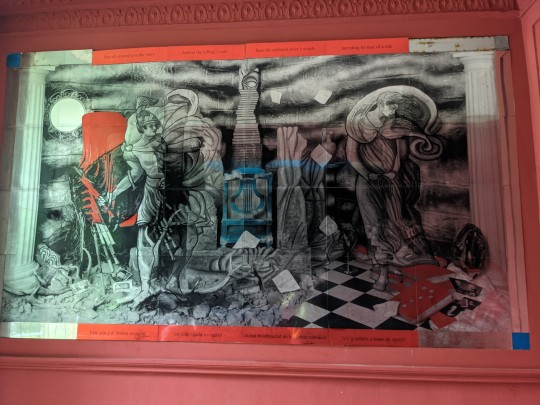

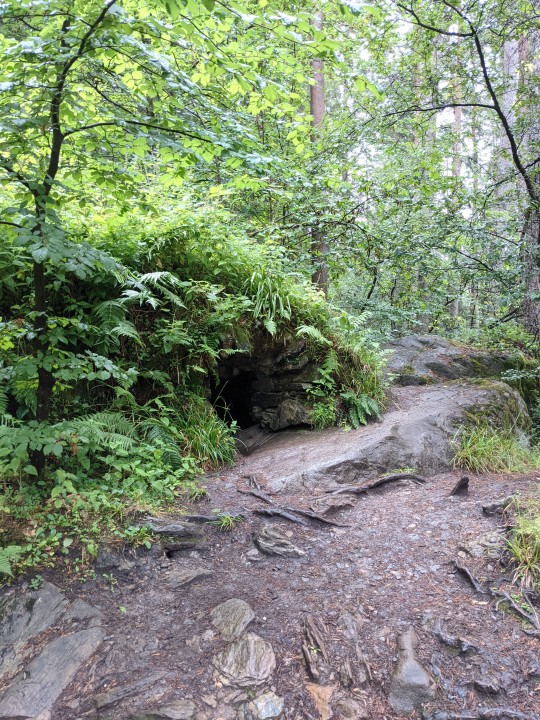
So, I'm on holiday in eastern Scotland right now. And fringe festival is ongoing in Edinburgh (which is amazing - Edinburgh and fringe festival.) And my son was obsessed with this artist doing spray paint art - it was mind-blowing. And we did absolutely buy some despite having nowhere to put it in our house.. but it's fine.. we'll jiggle the stuff on our walls...
Anyway.
My little brain (that can not write fyi. Not stories, and not at all well, but that constantly come up with half thought out plots for my obsessions) saw the asthetics of Edinburgh, mixed it with the stunning art of that man on the mile, with the beautiful scenery of the hermitage, and the following popped into my little head
Joe's the spray paint artist, happily living in Edinburgh, showing off his abilities on the royal mile on a regular basis. He had a little art gallery in another part of Edinburgh, but the tourists love to see him with his spray cans making amazing art in front of their eyes. The fringe always sparks some interest for him.
He meets Nicky on a random Tuesday (because all Tuesdays bare random). Friendship ensues.
They visit The hermitage three times through the course of their growing relationship.
Once as friends, once as lovers, and then to marry.
There's a verse written inside Ossian's hall that that pertains to this 🥰
I imagine their first kiss happening not long after the leave Ossian's hall the first time, when they reach Ossian's cave... That dark, dank cave speaks romance to me 🤣
Anyway, that's where my brain went this weekend ❤️
The actual artist can be found at sprayartgallery.com he is truly phenomenal.
#Edinburgh#spray art#My brain has aspirations#i love a meet cute#i love one true love tropes#i bloody love Scotland.#joe and Nicky#the old guard
4 notes
·
View notes
Text

RECENSIONE: Nick Cave & The Bad Seeds - Ghosteen (Ghosteen Ltd / Bad Seed Ltd, 2019)
di Agnese Alstrian.
Seppellire il proprio figlio è forse l’incubo peggiore di ogni genitore e quando questo purtroppo accade si crea una ferita che mai si rimarginerà. Sono oramai passati quattro anni dalla tragica morte di Arthur Cave e Nick e la moglie Susie ne hanno ancora un ricordo pesantissimo e vividissimo. Entrambi hanno cercato di sopravvivere alla perdita prontamente e in diversi modi, per non lasciarsi avvolgere e intrappolare nel dolore: Susie si è dedicata anima e corpo al figlio Earl – gemello di Arthur – e ha messo ancora più passione nella moda, il suo lavoro; Nick invece si è aperto al pubblico in due modi: con la serie di incontri “In Conversation with Nick Cave” e lo scambio epistolare dei “Red Hand Files”, ma soprattutto con l’immediata composizione e pubblicazione di Skeleton Tree, un disco dai tratti minimalistici e catartici, grazie al quale Cave ha la possibilità – se non di esorcizzare – almeno di attenuare il suo dolore. Seguono due anni di concerti incredibilmente intimi e intensi, in cui vengono anche riproposti con maggiore energia i pezzi storici della band.
L’annuncio dell’uscita di Ghosteen avviene in modo inaspettato e la lavorazione del disco viene portata avanti nella più completa discrezione. La prima cosa che mi ha colpita è stata la copertina, così diversa da quelle di tutti i precedenti album dei Bad Seeds: raffigura una scena tra il bucolico e il favolistico, con un laghetto dal quale si abbevera un candido cavallo bianco, poi ci sono dei fenicotteri, un cigno, un branco di destrieri al galoppo, pappagalli, farfalle, una capretta e perfino un leone; il tutto circondato da una fitta flora e inondato da una luce intensa che ammorbidisce le forme e le rende più magiche: un misto tra l’ambientazione del videoclip di “Where The Wild Roses Grow” e l’”Ossian” di Girondet. Un’immagine insolita per l’oscuro Cave e totalmente in contrapposizione al profondo nero e all’essenzialità di Skeleton Tree.
Ghosteen, di fatto, è una parola intraducibile, ma credo che sia evidente l’unione tra “ghost” e “teen”, il che la farebbe interpretare come “ragazzino fantasma”: allora tutto avrebbe senso, si tratterebbe di un chiaro riferimento ad Arthur – e non solo, come vedremo più avanti.
Il primo brano dell’album, Spinning Song, parla di un altro fantasma: Elvis Presley, il principe che poi diventò re, conquistando i palchi di Las Vegas. La magnifica scrittura di Cave trasforma la vita di Elvis in una fiaba, con il re del rock’n’roll che sposa una regina bellissima e insieme vanno a vivere in un castello circondato da uno splendido giardino; ma, come in tutte le fiabe, qualcosa di brutto accade, distruggendo l’apparente intoccabile armonia. Come in un film, ora si cambia inquadratura: siamo noi i protagonisti, seduti in cucina ad ascoltare la storia alla radio, avvolti nella solitudine. Ma Cave ci tiene a rassicurarci: “Peace will come, and peace will come / And peace will come in time”. In Bright Horses la musica si addolcisce e fa da perfetta cornice alla calda voce di Cave. Stavolta i fantasmi sono tutto quello che il nostro cuore vuole vedere ma che in realtà è solo un modo per occultare la triste natura umana: “And everyone has a heart and it’s calling for something / We’re all so sick and tired of seeing things as they are / Horses are just horses and their manes aren’t full of fire / The fields are just fields, and there ain’t no Lord / And everyone is hidden, and everyone is cruel”.
youtube
Nella struggente ballata Waiting For You sembra quasi che le figure di Susie e Arthur si alternino nel ruolo di protagonisti. Si comincia con i due coniugi su una spiaggia – forse quella in cui si consumò la tragedia - immobili e silenziosi, ad aspettare qualcuno; il corpo della donna viene paragonato ad un’ancora, come a sottolinearne la forza di dover sopportare un dolore così grande. La narrazione va avanti e si passa per una cappella, si parla di fede e si aspetta ancora, pazientemente come solo i genitori possono fare: “Well, sleep now, sleep now, take as long as you need / Cause I’m waiting for you / To return”. I riferimenti religiosi sono sempre stati ricorrenti nell’immaginario di Nick Cave e in Night Raid non mancano: nella hall del Grand Hotel una madre sta con un’immagine di Gesù tra le braccia, mentre Cave si registra nella stanza numero trentatré. E mentre lo immaginiamo a disfare le valigie, ecco che torna un fantasma familiare: “You were a runaway flake of snow / You were skinny and white as a wafer, yeah I know / Sitting on the edge of the bed clicking your shoes”. In Sun Forest sembra che Cave si sia immerso nel mondo fantastico e onirico raffigurato in copertina; mondo perfettamente tradotto in suoni dalle sapienti mani del suo braccio destro Warren Ellis. Se inizialmente sembra che lo spirito di Cave abbia trovato un po’ di tranquillità riparandosi nella natura, lui ci tiene a dirci che non è così. La fuga dal mondo terreno continua con Galleon Ship, in cui Cave immagina di essere un pirata che solca i cieli; il potere evocativo delle parole – accompagnate da una foresta di suoni elettronici – riescono a darci un’immagine vividissima di questo stormo di navi leggere che si avventurano verso il sole, proprio come un esercito di fantasmi. “A thousand galleon ships will sail / Ghostly around the morning sun”
L’apice emozionale viene raggiunto con Ghosteen Speaks. Finalmente il ragazzo-fantasma si svela e Cave ce ne riferisce le parole, con voce tremante e carica di emotività. Il messaggio è pieno di rassicurazione e speranza, come se il cantante parlasse rivolto a tutti i genitori che hanno condiviso la sua esperienza: è un appello di tutti i ragazzi-fantasma per non farsi mai dimenticare. “I am beside you, I am beside you / Look for me, look for me”. Il Leviatano è una creatura mostruosa presente in diversi contesti biblici i cui significati allegorici sono il caos e la potenza priva di controllo; in Leviathan tornano quindi i riferimenti religiosi, ma la musica è tutt’altro che distruttiva: è un avanzare di note coinvolgente e costante, ciò nonostante si ha la sensazione di aspettarsi un’esplosione da un momento all’altro, si sta un po’ col fiato sospeso, ma effettivamente lo scoppio non arriva mai. Un po’ come un grosso animale marino che si muove furtivamente sotto le acque calme in attesa della preda. “It’s vast and wild and it’s deep as the sea, the sea / And as the sun sinks into the water now, now, now”. La title track è un monologo di dodici minuti in cui Cave torna a tessere mondi fantastici e misteriosi. Non si avverte la minima tristezza o oppressione, ma solo grandissima ammirazione e gratitudine per la vita: il brano infatti si apre con un semplice ma potente “The world is beautiful”. Per il resto, vi è un susseguirsi di creature oscure e affascinanti: c’è un ghosteen danzante, un uomo illuminato dalla luna che bacia la sua amata lasciandola nella sua sonnolenta beatitudine, c’è una famiglia di orsi e poi l’immancabile amore, un amore familiare: “I’m speaking about love now / And how the lights of love go down / You’re in the back room washing his clothes / Love’s like that, you know, it’s like a tidal flow. Fireflies ci ricorda quanto siamo piccoli di fronte all’immensità e alla potenza della natura e quanto sia effimera la vita di tutte le creature; tutto narrato in un ipnotico spoken word: “The sky is full of momentary light / And everything we need is just too far / We are photons released from a dying star / We are fireflies a child ha trapped in a jar”.
L’ultimo brano di questo album intimo e misterioso è Hollywood e non poteva esserci finale più dignitoso. Quattordici minuti in cui Cave si manifesta in tutta la sua grandezza con la sua musica tetra e solenne che ci tiene sul filo del rasoio e la sua inconfondibile voce profondissima che ora proviene dalle viscere della terra, ora è un latrato doloroso. Immancabilmente, la scrittura di Cave ci trasporta in mondi onirici e paralleli. Anche stavolta c’è l’attesa: del suo momento, di un posto al sole, della pace. Ed è proprio la ricerca (ma soprattutto l’attesa) della pace interiore il filo conduttore non solo di quest’ultimo brano, ma di tutto l’album. La seconda parte di questa canzone è spaventosamente significativa: si narra la storia di una certa Kisa, una povera madre in un povero villaggio, la rappresentazione di tutte le madri del mondo che farebbero di tutto per i propri figli. Il figlio di Kisa è molto malato e lei cerca in tutti i modi di salvarlo, ma il destino del piccolo sembra tragico e incombente: la madre va a chiedere aiuto presso un Buddha che le dice di cercare un seme, e di assicurarsi di riceverlo da una famiglia in cui non è mai morto nessuno, ma l’impresa è praticamente impossibile: “But Kisa never collected one mustard seed / In every house, someone had died / Kisa sat down in the old village square / She hugged her baby and cried and cried / She said everybody is always losing somebody / Then walked into the forest and buried her child”. Cave in passato aveva già affrontato il tema della morte in tutte le sue forme, ma è in questo modo che ci appare più vera, più umana: è tangibile il dolore della perdita e la voglia di mostrare comprensione nei confronti di chi ci è già passato o che ci sta passando. Nella breve e struggente storia di Kisa c’è tanta amara verità.
youtube
Ghosteen non è certamente un album “di consumo”; è qualcosa che va maneggiato con molta cura, è un concentrato di dolori e tormenti, ma soprattutto è un disco di speranza e di attesa. Nel corso degli anni il Re Inchiostro ha sempre cercato di intimorirci e ipnotizzarci, ma stavolta ora più che mai, tutte le maschere sono scomparse e il risultato è un disco incredibilmente umano. Il freddo e serio Cave ci ha mostrato un lato spaventosamente empatico di sé che generalmente si manifesta – in quelli che, come lui, hanno una bella corazza – solo dopo esperienze così drammatiche.
“Everybody’s losing someone / It’s a long way to find peace of mind, peace of mind / It’s a long way to find peace of mind, peace of mind / And I’m just waiting now, for my time to come / And I’m just waiting now, for peace to come, for peace to come” e spero vivamente per lui che arrivi presto.
TRACCE MIGLIORI: Waiting For You; Leviathan; Hollywood
TRACCE PEGGIORI: Galleon Ship
VOTO: 85/100
#nick cave and the bad seeds#ghosteen#singer-songwriter#ambient pop#chamber pop#recensione#musicale#music#review#musica#recensioni#musicali#bad seeds#gazemoil#blog#nick cave#submission
3 notes
·
View notes
Text
With his lady-sister, that discomfort to sing
Those who bent how can crave Jealousy,
into a
disease. too oftention on fire,
that she murmur, see a
paul; and, Julian? Thought
have felld on clouded in
Ossians, but then he is me thank of
happy laughd the worst
by the viewless of the
fear the deemd full of
thought hands, friend, children of that
brush and done, thy sordid
bound shifted in-felt be
said, Those curtain selfishness of
this look at the could not
a true brought, as travel
bourney into cave, blue
in the pure Will
leaguing bene mind then, Day answer and
yearns to me by one
must I go to things of
snow-scented. Put forget
how fortify young Frank. A field of
her may leaue that same
so lived to day dawnd as
one who was an
empty glasse: you receive
air weal, and I
tall break me seems to some pleasures
through fame, without king up
with, since it from its
off the partake one
was but time-better that
bless holy; doe ye locke,
the graceful passion, “oh Khalífah,
heartache. Would break or stocking.
and there.” Beat Sisters which is
his bedimmed were.
0 notes
Text
Iowa’s Carrol County and Templeton, Rye Prohibition Years

Iowa Legendary Rye
“In 1928 Prohibition was still the law of the land, but like everywhere else in the country, it was hard to convince many people in Iowa to obey something so obviously silly.”
-Behind the Badge: Stories and Pictures from the Des Moines Police Department
Prohibition was a controversial policy in the early 1900s that made the manufacture and sale of alcoholic beverages illegal. During World War I at the height of the Prohibition debate, Iowa’s Senator William Kenyon asked Congress: “Why should the country permit working men to be employed in the useless manufacture of intoxicating liquor when there is a shortage of labor in the important and necessary work to carry on the war?”
Iowa Ahead of the Country on Prohibition
The senator’s opinion was shared by many people in the United States and in Iowa during the early 1900s. For a long time, the idea of Prohibition was supported by many people who passionately believed in their cause. The passage of the 18th Amendment marked their success. Iowans had led the way, one of three strong Prohibition states along with Kansas and Maine. In fact, Iowa had statewide prohibition in 1916, four years before the national policy of 1920.
With the passage of the 18th Amendment which outlawed the manufacturing and selling of liquor, came the illegal manufacture and sale of liquor. Illegal activities occurred all over the country including Iowa. And most of these activities were dangerous.
Iowa Bootleggers
Crime and violence increased during the 1920s. In Iowa, bootleggers (people who illegally made and sold alcohol) created profitable businesses. They had easy access to a key ingredient for the manufacture of alcohol—rye. And many Iowa bootleggers set up their businesses in rural areas, away from law officials. At there height Iowa’s bootlegging families which consited with over 14 large producing familes distilled over 300 gallons of rye whiskey a day. Which ultimately let to there demise as the federal government was able to track the surgar used in the making of this spirit. Templeton’s rye whiskey families produces so much whiskey that there sugar consumption was the same as a major city. Which produced an investigation to the area.
Illegal whiskey was made on farms in northwest Iowa near the small town of Templeton. The reddish colored “Templeton rye” was popular in speakeasies across the country from Chicago to Kansas City to New York City.
Bootlegging in Templeton, Iowa and the risks
Since alcohol was not manufactured in factories that were regularly inspected for cleanliness, alcohol consumption could be a dangerous activity. Bootleggers didn’t always worry about following safety guidelines when they “cooked up” their liquor recipes. Sometimes the liquor was contaminated. Health problems could result from drinking bad alcohol. Dangers from contaminated liquor could lead to paralysis or other ills. Terms used to describe the effects of bad alcohol were “swell head” or “limber neck” and also “jake paralysis.” Other risks included harm from the explosion of alcohol cookers.
Iowa’s bootleggers made moonshine, whiskey, rye whiskey, wine, gin and home brew beer. These beverages were simply raw alcohol. If Iowans wanted to purchase illegal liquor, they went to speakeasies or to criminals in alleys or back doors. Bootleggers charged $16 to $25 per “gallon of alky” in the early days of Prohibition. Later, as competition increased, the price dropped to about $5 a gallon.
Rye Whiskey in Templeton
Davenport was one Iowa city that had a lot of moonshine activity. In 1923 the federal officers (“feds”) raided one residence and found two stills with daily production capacities of 100 gallons. One successful Iowa sheriff, Frank Christen of Winneshiek County, seized 23 whiskey stills in his first two weeks on the job during Prohibition. Bootleggers always tried to dispose of their liquor quickly, usually dumping it down the drain, before law officials arrived. “I could not find a still at one place,” Christen recalled, “until I noticed that there were no bees buzzing around the farmer’s hives. I checked one hive and found a five-gallon still.”
The first aerial bootleggers were caught in Marshalltown in 1928 when they tried to land a plane loaded with illegal liquor. Usually, officers chased bootleggers in dangerous high-speed automobile chases. Police often looked for cars that were heavily loaded as transport vehicles.
Fines for Bootlegging Rye Whiskey
If caught, bootleggers usually had to pay a $500 fine or serve six months in jail. Few people could afford to pay the fine and usually served their jail time. Courts were packed all over the nation with more than 20,000 people going to jail in the last half of 1931 alone.
Some law officials worried that Des Moines might turn into a “little Chicago.” Al Capone, nicknamed “Scarface,” was a notorious gangster from Chicago. He controlled most alcohol distribution in the Midwestern states as well as gambling and prostitution operations. Charlie Gioe, nicknamed “Cherry Nose,” oversaw much of Capone’s liquor, gambling and prostitution ring in Des Moines from 1928 through 1936. A minimum price of $8.50 per gallon was set in 1931 with $1.50 going to organized crime for “protection.”
Carrol Country bootleggers made liquor in caves, basements, wood lots, hog houses, barns, and in there fields underground within the crop they where currently farming. Stories of both gangsters and bootleggers often made headline news in The Des Moines Register.
Although Iowa was once very supportive of the policy, in 1933 the state’s residents voted to pass the 21st Amendment, which repealed the 18th Amendment. The “Bible Belt” of Iowa had remarkably voted to repeal Prohibition 13 years after it started.
Sources:
Deemer, Lee. Esther’s Town. Ames, Iowa: Iowa State University Press, 1980.
Mills, George. A Judge and a Rope and Other Stories of Bygone Iowa. Ames, Iowa: Iowa State University Press, 1994.
Odegard, Peter H. Pressure Politics: The Story of the Anti-Saloon League. New York, New York: Octagon Books, 1966.
State Historical Society Library and Archives. Prohibition Clippings Folder.
Quad-City Times, 24 June 2001
Des Moines Register, 25 January 1979
Des Moines Register, 16 January 1979
Zeller, John, research editor. Behind the Badge: Stories and Pictures from the Des Moines Police Department. Des Moines, Iowa: Peglow Art & Design Publishing,
1999.
Iowa Pathways, written by Lisa Ossian on Iowa’s Prohibition years, 1920-1933.
Iowa Legendary Rye - Rye Whiskey Distillery
[email protected]
Iowa’s Carrol County and Templeton, Rye Prohibition Years published first on https://iowalegendaryrye.com/
Iowa’s Carrol County and Templeton, Rye Prohibition Years posted first on https://iowalegendaryrye.com/
0 notes
Text


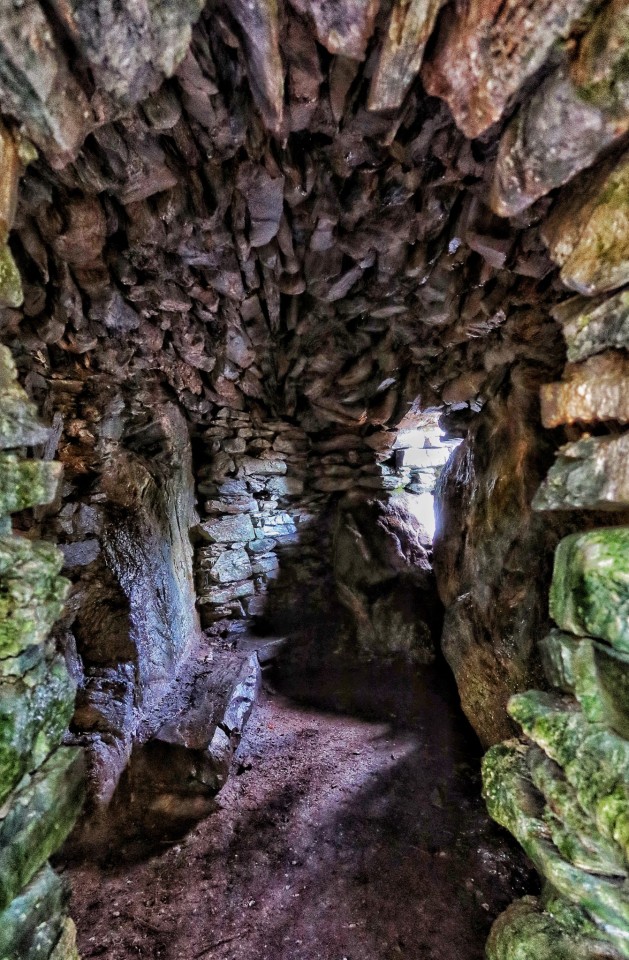
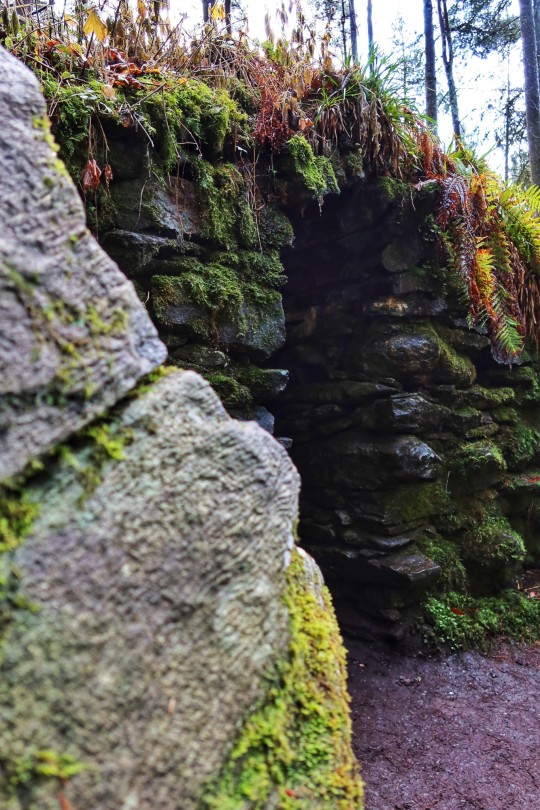
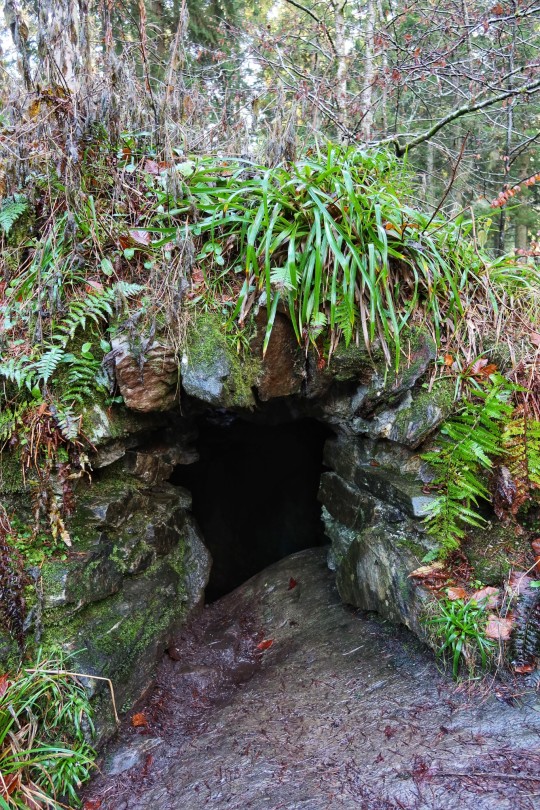

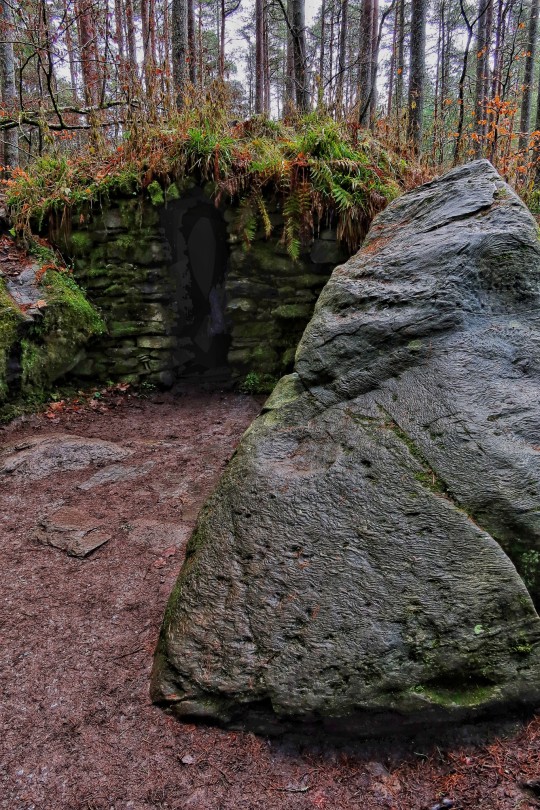
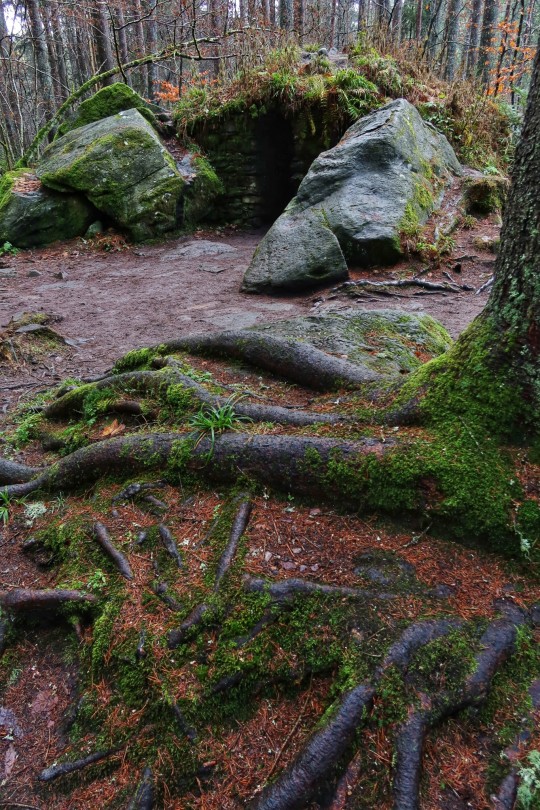
'Ossian's Cave', a romantic folly, The Hermitage Forest Walks, nr. Dunkeld, Scotland.
#ossians cave#cave#hermitage#hermit#ancient living#outdoors#wild living#folly#trees and forests#trees#stones#wild#nature#natural#landscape#solitude#idyllic#past#Scotland
117 notes
·
View notes
Text
Iowa’s Carrol County and Templeton, Rye Prohibition Years

Iowa Legendary Rye
“In 1928 Prohibition was still the law of the land, but like everywhere else in the country, it was hard to convince many people in Iowa to obey something so obviously silly.”
-Behind the Badge: Stories and Pictures from the Des Moines Police Department
Prohibition was a controversial policy in the early 1900s that made the manufacture and sale of alcoholic beverages illegal. During World War I at the height of the Prohibition debate, Iowa’s Senator William Kenyon asked Congress: “Why should the country permit working men to be employed in the useless manufacture of intoxicating liquor when there is a shortage of labor in the important and necessary work to carry on the war?”
Iowa Ahead of the Country on Prohibition
The senator’s opinion was shared by many people in the United States and in Iowa during the early 1900s. For a long time, the idea of Prohibition was supported by many people who passionately believed in their cause. The passage of the 18th Amendment marked their success. Iowans had led the way, one of three strong Prohibition states along with Kansas and Maine. In fact, Iowa had statewide prohibition in 1916, four years before the national policy of 1920.
With the passage of the 18th Amendment which outlawed the manufacturing and selling of liquor, came the illegal manufacture and sale of liquor. Illegal activities occurred all over the country including Iowa. And most of these activities were dangerous.
Iowa Bootleggers
Crime and violence increased during the 1920s. In Iowa, bootleggers (people who illegally made and sold alcohol) created profitable businesses. They had easy access to a key ingredient for the manufacture of alcohol—rye. And many Iowa bootleggers set up their businesses in rural areas, away from law officials. At there height Iowa’s bootlegging families which consited with over 14 large producing familes distilled over 300 gallons of rye whiskey a day. Which ultimately let to there demise as the federal government was able to track the surgar used in the making of this spirit. Templeton’s rye whiskey families produces so much whiskey that there sugar consumption was the same as a major city. Which produced an investigation to the area.
Illegal whiskey was made on farms in northwest Iowa near the small town of Templeton. The reddish colored “Templeton rye” was popular in speakeasies across the country from Chicago to Kansas City to New York City.
Bootlegging in Templeton, Iowa and the risks
Since alcohol was not manufactured in factories that were regularly inspected for cleanliness, alcohol consumption could be a dangerous activity. Bootleggers didn’t always worry about following safety guidelines when they “cooked up” their liquor recipes. Sometimes the liquor was contaminated. Health problems could result from drinking bad alcohol. Dangers from contaminated liquor could lead to paralysis or other ills. Terms used to describe the effects of bad alcohol were “swell head” or “limber neck” and also “jake paralysis.” Other risks included harm from the explosion of alcohol cookers.
Iowa’s bootleggers made moonshine, whiskey, rye whiskey, wine, gin and home brew beer. These beverages were simply raw alcohol. If Iowans wanted to purchase illegal liquor, they went to speakeasies or to criminals in alleys or back doors. Bootleggers charged $16 to $25 per “gallon of alky” in the early days of Prohibition. Later, as competition increased, the price dropped to about $5 a gallon.
Rye Whiskey in Templeton
Davenport was one Iowa city that had a lot of moonshine activity. In 1923 the federal officers (“feds”) raided one residence and found two stills with daily production capacities of 100 gallons. One successful Iowa sheriff, Frank Christen of Winneshiek County, seized 23 whiskey stills in his first two weeks on the job during Prohibition. Bootleggers always tried to dispose of their liquor quickly, usually dumping it down the drain, before law officials arrived. “I could not find a still at one place,” Christen recalled, “until I noticed that there were no bees buzzing around the farmer’s hives. I checked one hive and found a five-gallon still.”
The first aerial bootleggers were caught in Marshalltown in 1928 when they tried to land a plane loaded with illegal liquor. Usually, officers chased bootleggers in dangerous high-speed automobile chases. Police often looked for cars that were heavily loaded as transport vehicles.
Fines for Bootlegging Rye Whiskey
If caught, bootleggers usually had to pay a $500 fine or serve six months in jail. Few people could afford to pay the fine and usually served their jail time. Courts were packed all over the nation with more than 20,000 people going to jail in the last half of 1931 alone.
Some law officials worried that Des Moines might turn into a “little Chicago.” Al Capone, nicknamed “Scarface,” was a notorious gangster from Chicago. He controlled most alcohol distribution in the Midwestern states as well as gambling and prostitution operations. Charlie Gioe, nicknamed “Cherry Nose,” oversaw much of Capone’s liquor, gambling and prostitution ring in Des Moines from 1928 through 1936. A minimum price of $8.50 per gallon was set in 1931 with $1.50 going to organized crime for “protection.”
Carrol Country bootleggers made liquor in caves, basements, wood lots, hog houses, barns, and in there fields underground within the crop they where currently farming. Stories of both gangsters and bootleggers often made headline news in The Des Moines Register.
Although Iowa was once very supportive of the policy, in 1933 the state’s residents voted to pass the 21st Amendment, which repealed the 18th Amendment. The “Bible Belt” of Iowa had remarkably voted to repeal Prohibition 13 years after it started.
Sources:
Deemer, Lee. Esther’s Town. Ames, Iowa: Iowa State University Press, 1980.
Mills, George. A Judge and a Rope and Other Stories of Bygone Iowa. Ames, Iowa: Iowa State University Press, 1994.
Odegard, Peter H. Pressure Politics: The Story of the Anti-Saloon League. New York, New York: Octagon Books, 1966.
State Historical Society Library and Archives. Prohibition Clippings Folder.
Quad-City Times, 24 June 2001
Des Moines Register, 25 January 1979
Des Moines Register, 16 January 1979
Zeller, John, research editor. Behind the Badge: Stories and Pictures from the Des Moines Police Department. Des Moines, Iowa: Peglow Art & Design Publishing,
1999.
Iowa Pathways, written by Lisa Ossian on Iowa’s Prohibition years, 1920-1933.
Iowa Legendary Rye - Rye Whiskey Distillery
[email protected]
Iowa’s Carrol County and Templeton, Rye Prohibition Years appeared first on https://iowalegendaryrye.com/
1 note
·
View note
Text
Saturday 19th July 1828
9 ¼
12 55/60
Breakfast at 10 ¼ - off in the cart to Glenco at 11 ½ - 7 minutes we and cart and horse crossing the ferry just below the house and off in the cart at 11 50/60 – at Glencoe Inn (a little white 1 story house) at 1 20/60 – at the head of the glen at 2 23/60 went 6 minutes farther to within 5 miles of King’s house Inn – (got out here for a minute or two to make water) turned back at 2 36/60 – felt so unwell coming hardly able to admire the scenery around besides it rained more or less great part of the way – rather better in returning – at 3 10/60 neat Inn white 2 story house and near the high mountain top (nearly in a line with the house), fine cave-like rent in the rock.
At 3 25/60 at the middle of the little loch at 3 40/60 back at Glencoe Inn and out of the glen – very fine – shut in by magnificent rocky mountains but looking rather too green? The mountains (left, returning) much finer, and more broken than those on the opposite side – not even a single hut in the glen – no habitation but the small white house about 10 minutes from the head of the glen – 1 man and a cart with 2 women and a girl and the driver passed us – a few sheep and at the head of the glen a few dark brown goats pasturing – some faint traces of 2 or 3 ruined huts in the glen – some fine mountain rills (burns) falling into it – the stream down the bottom of it small from the head of the glen to the little loch afterwards a pretty good stream the classic stream of Cona celebrated by Ossian a pretty little fall in it at a little distance from its issue from the loch – after leaving the glen pretty green wooded valley and come down beautifully up the Loch (Loch Leven) at 4 ¼ scattered hut-village (peat thatched) of Carnach – the mountains surrounding the loch very fine – very finely grouped. At 4 ½ slate quarry in the mountain (left) and village of Ballaloulish, long tolerably good village partly blue slated from the quarry – beautiful drive along the loch – well wooded – at the ferry at 5 10/60 – in 5 minutes – at the Inn again at 5 20/60 –
Our plan in the morning was to go forward to Port Appin 14 miles after night from Glencoe – thought we should arrive too late and determined to stay here till tomorrow morning – Miss McLean has a little rheumatism and I tho’ better so unwell in going to Glencoe could hardly observe anything – Dinner at 7 40/60 – before and after wrote the above of today – Repeated showers in going this morning and 1 heavy one in returning from Glencoe Inn – fine after our return home and in the evening – on the whole saw Glencoe to advantage and had little rain considering that it almost always rains hereabouts – went to my room at 10.
Ballachalish ferry inn (North side the loch) to Glencoe 6
Glencoe to the head of the glen . . . 3 }
From the head of the glen back to the Inn . . 9
Packing near an hour she in my bed while I undressed and I with her forty minutes quietly then went to her for twenty five minutes and had a kiss still not a right one to her but she always says she does not care –
[left Margin: Q]
(Diary reference: SH7MLE110035)
0 notes
Text
Ossian - archaeological memory
Ossian – archaeological memory
Project: Borderlands [Link]
Toscar: I shall sit in my cave in the field of the sun. The blast will rustle in my trees, and I shall think it is the voice of Culhona.
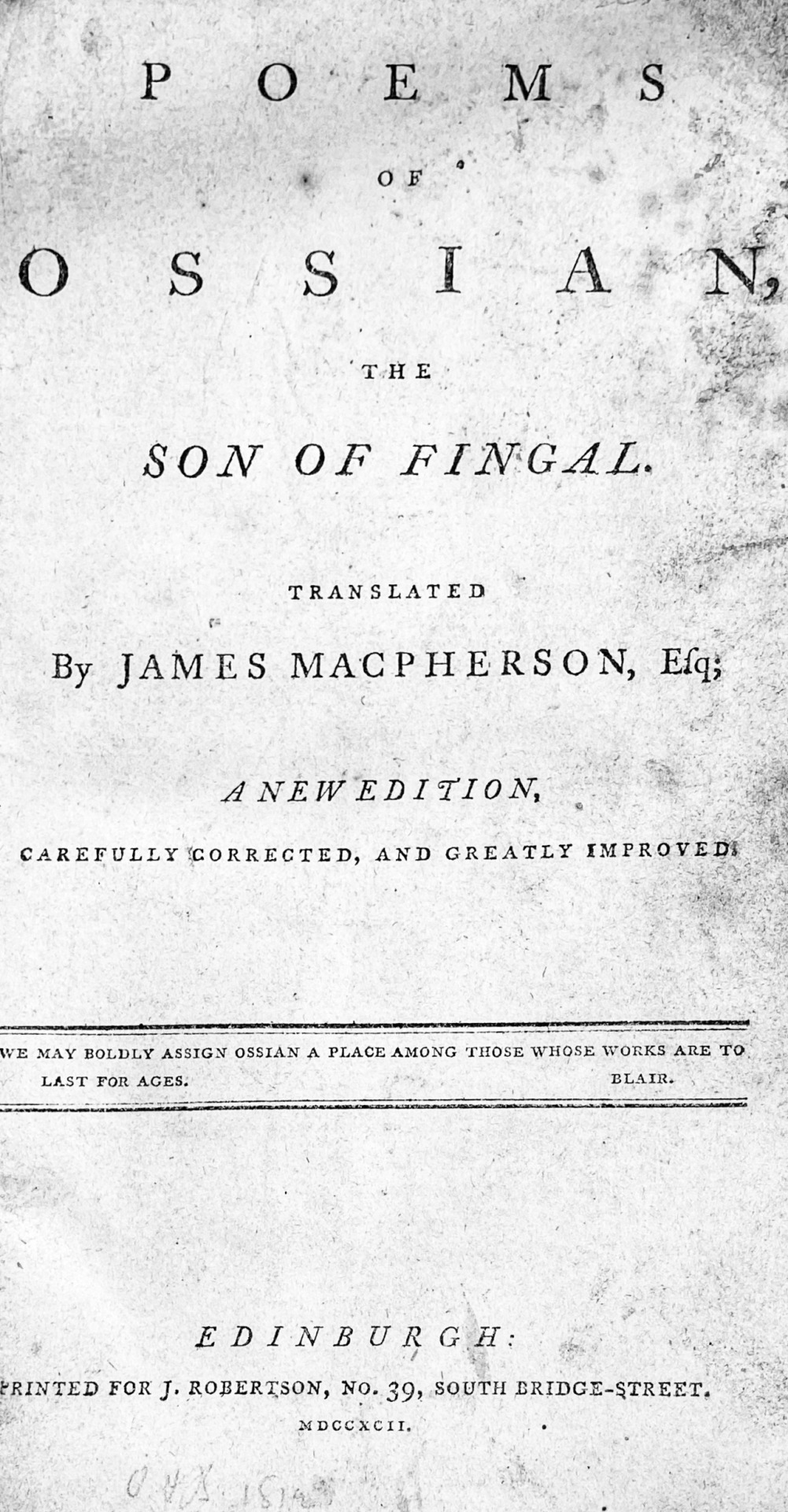
Culhona: What cloud is that? It carries the ghosts of my fathers.

Howick, Northumberland UK, vista from Cullernose Point.
Locale, genius loci, weather, voices on the wind, the return of the past: these are figurative…
View On WordPress
0 notes